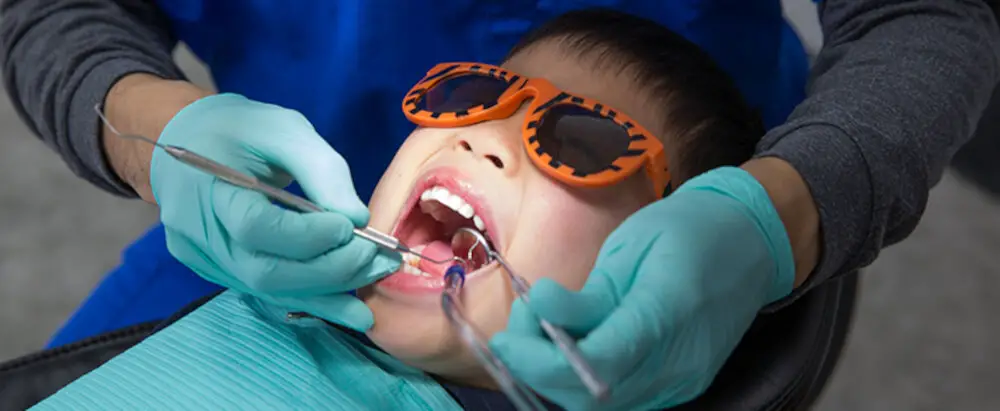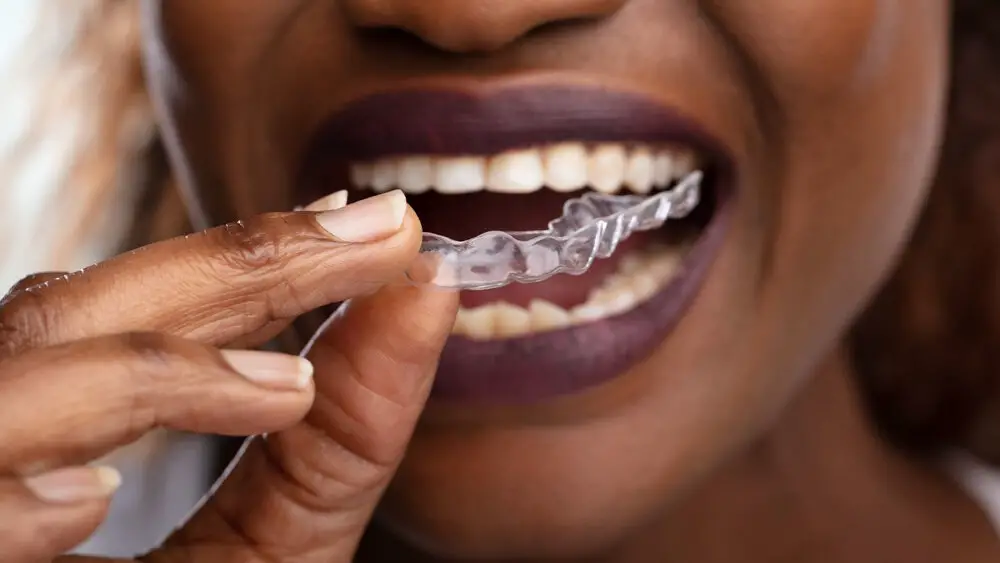Straw Drinking after Wisdom Teeth Extraction: How Long Should You Wait?

Wisdom teeth extraction is a common dental procedure that many people undergo in their late teens or early adulthood. It involves removing the third molars located at the back of the mouth, which can cause pain, infection, and other oral health issues. While the procedure itself is relatively straightforward, the recovery period can be uncomfortable and require some adjustment to your daily routine. One of the most common questions that patients have after wisdom teeth extraction is when they can resume normal activities, such as eating and drinking. In particular, many wonder when they can start using straws again, as this can impact the healing process. Using a straw after wisdom teeth extraction is generally discouraged, as it can dislodge the blood clot that forms in the socket where the tooth was removed. This clot is essential for healing, as it protects the underlying bone and tissue and helps to prevent infection. If the clot is dislodged, it can lead to a painful condition called dry socket, which delays the healing process and can require additional treatment. However, the length of time that you need to wait before using a straw can vary depending on your individual circumstances, such as the type of extraction you had and how well you are healing. In this article, we will explore the factors that affect when you can start using a straw after wisdom teeth extraction and provide some tips for managing your recovery.
Wisdom teeth extraction is a common dental procedure that involves the removal of one or more of the four permanent molars at the back of the mouth. These teeth are often removed due to overcrowding, impaction, or infection. After the procedure, postoperative care is crucial to ensure proper healing and prevent complications. This may include pain management, avoiding certain foods and activities, and maintaining good oral hygiene. Failure to follow postoperative care instructions can lead to dry socket, infection, or delayed healing. It is important to follow the instructions provided by the dentist or oral surgeon to ensure a speedy recovery and minimize discomfort. Straw drinking after wisdom teeth extraction should be avoided for at least 24 hours to prevent dislodging the blood clot and causing bleeding.
Straw drinking is a common practice that involves using a straw to consume beverages. Although it is a convenient way to drink, it can pose potential risks, especially after wisdom teeth extraction. When you drink through a straw, you create suction in your mouth, which can dislodge the blood clot that forms in the socket after the extraction. This blood clot is essential for the healing process as it protects the socket and promotes the growth of new tissue. Dislodging the clot can lead to a painful condition called dry socket, where the socket becomes exposed, and the nerves and bone are exposed. Therefore, it is advisable to avoid straw drinking for at least 24 hours after wisdom teeth extraction to reduce the risk of complications.
Why is straw drinking a concern after wisdom teeth extraction?

Straw drinking after wisdom teeth extraction is a concern because it can disrupt the healing process and lead to complications. The sucking motion required for straw drinking creates negative pressure in the mouth, which can dislodge the blood clot that forms over the extraction site. This clot is crucial for proper healing and protection of the underlying bone and nerves. If the clot is dislodged, it can cause dry socket, a painful condition where the bone and nerves are exposed to air, food particles, and bacteria, delaying the healing process and increasing the risk of infection. Therefore, avoiding straw drinking for a few days after wisdom teeth extraction is recommended to prevent complications and ensure proper healing. In addition, straw drinking after wisdom teeth extraction can also lead to increased swelling and bleeding. The sucking motion required for straw drinking can cause the blood vessels in the extraction site to rupture and bleed, leading to prolonged bleeding and swelling. This can prolong the healing process and increase discomfort and pain. Therefore, it is important to avoid straw drinking and other activities that involve sucking or spitting for a few days after wisdom teeth extraction to minimize the risk of complications and ensure proper healing. Patients should follow their dentist’s instructions and recommendations for postoperative care to ensure a smooth and quick recovery.
The sucking motion involves creating negative pressure in the oral cavity by creating a vacuum and drawing liquid or air into the mouth. This action can dislodge the blood clot that forms in the extraction site after wisdom tooth extraction. The blood clot is crucial for the healing process as it protects the underlying bone and tissue from infection and promotes the growth of new tissue. Dislodging the blood clot can result in a condition called dry socket, which can cause severe pain and delay the healing process. Therefore, it is recommended to avoid any sucking motion, including straw drinking, for at least 24-48 hours after wisdom tooth extraction to allow the blood clot to form and stabilize.
Blood clotting is a crucial process that aids in healing after a wisdom teeth extraction. After the extraction, the blood clot forms a protective layer over the wound, preventing harmful bacteria from entering and causing infections. The clot also stops bleeding by sealing off the blood vessels, promoting the healing process and minimizing the risk of excessive bleeding. If the blood clot is dislodged or dissolved too early, it can lead to a painful and serious condition called dry socket. Therefore, it is vital to protect the blood clot by avoiding activities that can dislodge it, such as drinking through a straw, smoking, or vigorous rinsing. By taking proper precautions and allowing the blood clot to form and heal, patients can ensure a smooth and painless recovery after a wisdom teeth extraction.
One of the significant risks associated with dislodged blood clot, also known as dry socket, after wisdom teeth extraction is excruciating pain. The blood clot plays a crucial role in the healing process by protecting the exposed bone and nerves, and if it dislodges, the area becomes vulnerable to bacteria and food particles, leading to infection and inflammation. Additionally, dry socket can delay the healing process and increase the risk of nerve damage, which can result in numbness of the tongue, lips, and cheeks. Thus, it is crucial to follow the post-operative instructions provided by the dentist and avoid using straws or smoking for at least 72 hours after the surgery to prevent dislodging the blood clot.
How long should you wait before using a straw after wisdom teeth extraction?

After wisdom teeth extraction, it is essential to take proper care of your oral health to avoid any complications during the healing process. One of the most common questions that arise during this critical period is how long should you wait before using a straw. It is recommended to avoid using a straw for the first few days after the procedure as the sucking motion can cause bleeding and dislodge the blood clot, leading to dry socket. Dry socket can be painful and delay the healing process. Therefore, it is best to avoid any activity that creates suction in the mouth, such as smoking, drinking from a straw, or spitting, for at least 24-48 hours after the surgery. After the first few days, if the healing process is going well, you can gradually introduce a straw into your routine. However, it is essential to be cautious and start with small sips, avoiding creating too much suction in the mouth. It is also crucial to ensure that the straw is positioned towards the front of the mouth and not near the extraction site. Continuing to avoid straws or any activity that creates suction for an extended period can help promote a faster and smoother healing process. Following the post-operative instructions provided by your dentist or oral surgeon is crucial to avoid complications and ensure a speedy recovery.
When it comes to the question of how long one should wait to start straw drinking after a wisdom teeth extraction, there is no consensus among dental professionals. While some dentists recommend waiting for a few days or even up to a week before using a straw to avoid dislodging the blood clot and causing dry socket, others argue that using a straw gently and carefully soon after the procedure can actually promote healing and reduce swelling. Factors such as the type of extraction, the patient’s age and overall health, and the presence of any complications can also influence the decision. Ultimately, it is up to each individual dental professional to weigh the risks and benefits and advise their patients accordingly.
After wisdom teeth extraction surgery, it is recommended to wait for at least 24-48 hours before using a straw for drinking. This is because the suction created by the straw can dislodge the blood clot formed in the socket, which is crucial for the healing process. Dislodging the blood clot can result in a painful condition called dry socket, which can delay the healing and cause further complications. It is essential to follow this general recommendation to ensure a speedy and smooth recovery after surgery. Instead of using a straw, patients can opt for sipping from a cup or using a spoon to drink liquids. It is also crucial to avoid hot and spicy foods and maintain good oral hygiene to prevent any infection and promote healing.
The waiting period after wisdom teeth extraction can vary depending on several factors. The type of extraction, whether it’s a simple or surgical extraction, will play a significant role in determining the duration of the healing process. Additionally, individual healing processes can also impact the waiting period. Some people may experience faster healing times, while others may take longer to recover. Other factors that may influence the waiting period include age, overall health, and adherence to postoperative instructions provided by the dentist or oral surgeon. It’s important to note that rushing the healing process can lead to complications and prolong the recovery period, so it’s essential to take the necessary time to heal properly before engaging in activities like straw drinking.
Alternatives to straw drinking

After wisdom teeth extraction, it is essential to let the surgical site heal properly to avoid any complications. One of the most common instructions given by dental professionals is to avoid using a straw for at least a week after the procedure. This is because the sucking motion can dislodge the blood clot, which is crucial for proper healing. However, there are alternatives to straw drinking that can help satisfy thirst and keep you hydrated during this time. One option is to use a spoon to drink. This method involves tilting your head back and pouring small amounts of liquid into your mouth using a spoon. It may take some practice, but it can be an effective way to stay hydrated without risking any damage to the surgical site. Another alternative is to drink directly from a cup or glass. This method requires tilting the head back and sipping slowly to avoid any spills. It is crucial to avoid using a straw or any other sucking motion during this time to ensure proper healing and avoid any post-operative complications.
After undergoing wisdom teeth extraction, patients are advised to wait for a few days before consuming solid foods and using a straw for drinking. During this waiting period, it is important to stay hydrated and nourished to prevent dehydration and fatigue. Fortunately, there are alternative methods of hydration and nourishment that patients can adopt, such as sipping from a cup, spooning food, and consuming soft foods like smoothies, purees, and soups. These methods can help to provide the necessary nutrients and hydration while minimizing the risk of dislodging the blood clot that forms in the extraction site. It is important to follow the recommended waiting period and alternative methods of hydration and nourishment to ensure a smooth and successful recovery.
Staying hydrated and nourished during the healing process is crucial for a speedy recovery after wisdom teeth extraction. Adequate hydration ensures that the body is replenished with fluids lost during the procedure and helps to reduce inflammation and swelling. Proper nourishment is also essential as it provides the necessary nutrients needed for the healing process, such as protein and vitamins. Moreover, a balanced diet ensures the body has the energy it needs to repair the damaged tissues and grow new ones. Neglecting hydration and nourishment can slow down the healing process and increase the risk of complications. Therefore, it is important to follow the post-operative instructions provided by your dentist and drink plenty of fluids and eat soft, nutritious foods.
Tips for safe straw drinking after wisdom teeth extraction

After wisdom teeth extraction, the healing process is crucial to avoid complications. One common question that arises is when it is safe to start drinking through a straw. While it may seem like a simple task, using a straw can actually cause harm to the healing process. The suction that occurs when using a straw can dislodge the blood clot that forms in the socket, leading to a painful condition called dry socket. To prevent this from happening, it is best to wait at least a week after the extraction before using a straw. This will give enough time for the blood clot to form and for the healing process to begin. If you must drink through a straw before the recommended waiting period, there are some steps you can take to reduce the risk of complications. First, make sure the drink is at room temperature or colder, as hot drinks can increase the risk of dry socket. Additionally, try to position the straw toward the front of your mouth, away from the extraction site. Finally, take small sips instead of large gulps to reduce the suction force. By following these tips, you can minimize the risk of complications and ensure a smooth healing process after wisdom teeth extraction.
When it comes to drinking through a straw after wisdom teeth extraction, there are a few instructions you should keep in mind to avoid any complications or discomfort. First, make sure to position the straw towards the back of your mouth to avoid putting pressure on the extraction sites. Additionally, avoid using strong suction while drinking, as this can dislodge blood clots and delay the healing process. Instead, sip slowly and gently. It’s also recommended to use a shorter straw, as longer straws can increase the risk of pulling out the blood clot. By following these instructions, you can safely enjoy your favorite drinks while promoting a smooth recovery after your wisdom teeth extraction.
It is crucial to follow postoperative instructions from dental professionals after wisdom teeth extraction to ensure a successful recovery and avoid complications. These instructions may include avoiding certain foods, taking prescribed medications, and using ice packs to reduce swelling. Following these guidelines can help prevent infections, minimize pain, and reduce the risk of bleeding. Neglecting to follow postoperative instructions may result in dry socket, a painful condition where the blood clot is dislodged from the extraction site. Patients should communicate with their dentist or oral surgeon if they have any concerns or questions about their postoperative care. Overall, adhering to these instructions can make a significant difference in the healing process and result in a smooth and speedy recovery.
Postoperative care after wisdom teeth extraction is crucial for the proper healing of the surgical site and to prevent any complications. The first 24 hours after the surgery is a critical period, during which patients should rest and avoid any strenuous activity. It is also recommended to apply ice packs on the affected area and to take pain medication as prescribed by the dentist. After the first day, patients should start rinsing their mouth with warm salt water and avoiding any hard or crunchy foods. Proper nutrition is essential for the healing process, and patients are advised to consume soft and nutritious foods. Following the postoperative care instructions provided by the dentist can significantly reduce the risk of infection and promote faster healing.
Straw drinking after wisdom teeth extraction is often discouraged by dental professionals due to the potential risks it poses to the healing process. Sucking through a straw can create pressure in the mouth, which can dislodge the blood clot that forms after the extraction. This can result in a painful condition known as dry socket, which can delay the healing process and require additional treatment. It is crucial for patients to follow the guidelines provided by their dental professional to avoid complications and ensure a smooth recovery. While it may be tempting to indulge in a favorite beverage, waiting to use a straw until the mouth has fully healed is the best course of action to protect the integrity of the extraction site.
After a wisdom tooth extraction, it is essential to take care of the surgical site to promote proper healing. One common question that arises from patients is how long they should wait before using a straw. Based on expert recommendations, it is advisable to wait at least 24 to 48 hours before using a straw to avoid dislodging the blood clot that forms over the surgical site. This blood clot is crucial in protecting the underlying tissue and promoting healing. Therefore, it is crucial to adhere to this recommendation to avoid complications that may arise if the blood clot is prematurely removed. In conclusion, patients should follow their dentist’s instructions carefully, including the recommendation to wait for 24 to 48 hours before using a straw after wisdom tooth extraction.
Conclusion

In conclusion, it is highly recommended to wait at least 24 hours before attempting to drink any liquids through a straw after wisdom teeth extraction. This allows for proper blood clotting and reduces the risk of complications such as dry socket. However, every individual’s healing process may vary, and it is important to follow the specific instructions provided by your dentist or oral surgeon. Additionally, it is crucial to maintain good oral hygiene and avoid any strenuous activities that may interfere with the healing process. Patience and adherence to post-operative care instructions are key to a successful and comfortable recovery after wisdom teeth extraction.







